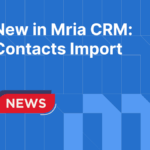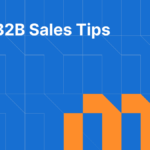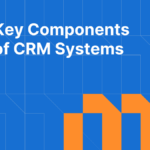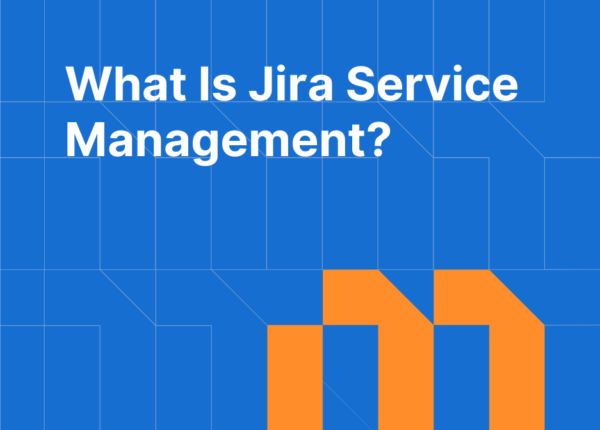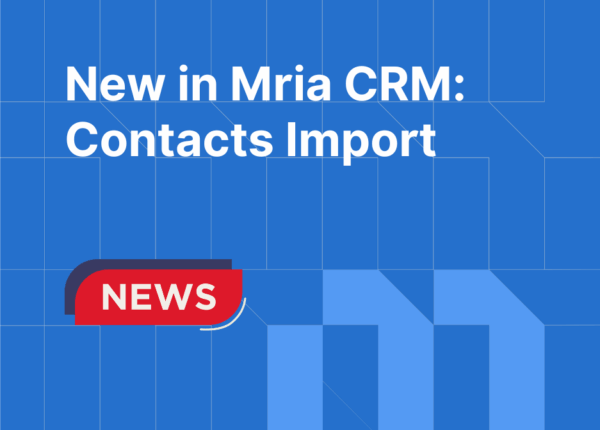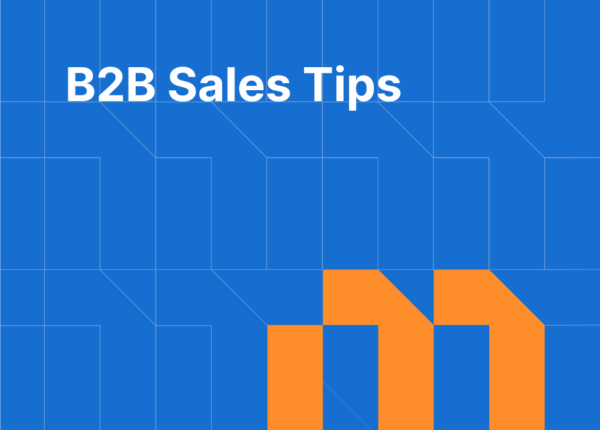B2B sales is the structured process by which businesses sell products or services to other businesses. These transactions are complex, involve multiple stakeholders, and often require custom solutions, long sales cycles, and measurable ROI. To succeed, companies need a clear strategy, the right tools, and a deep understanding of the B2B buying journey.
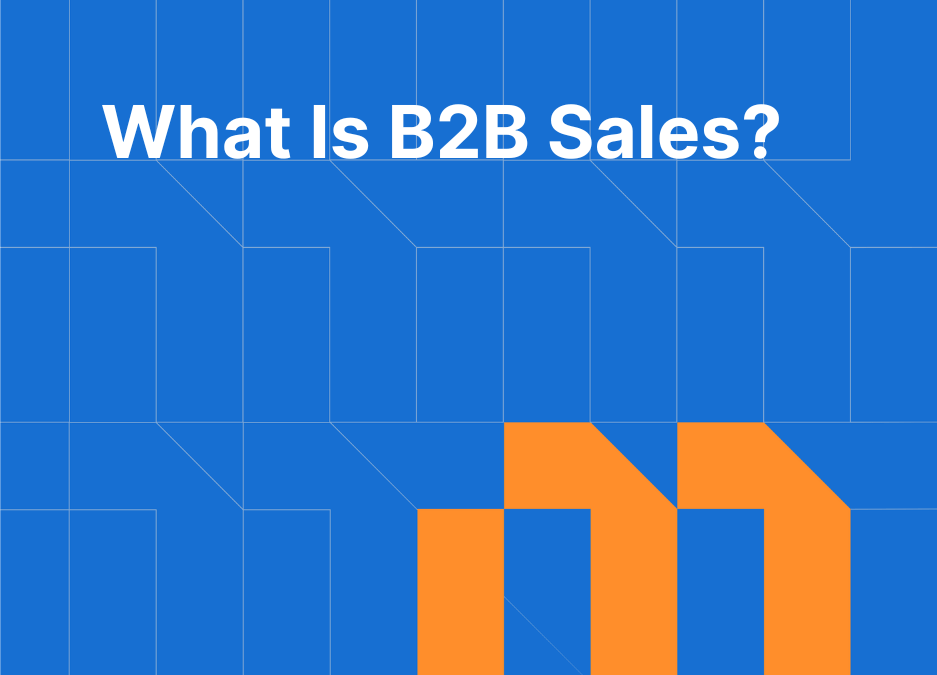
Table of Contents
What Does B2B Sales Mean?
B2B stands for “business to business.” In B2B sales, the buyer is a company rather than an individual. This changes everything: from how decisions are made to how products are evaluated and purchased.
The B2B sales meaning includes more than just who buys. It reflects a different sales environment where value is measured in long-term benefits, and decisions are based on budgets, operations, and stakeholder alignment.
Behind every successful B2B deal is a structured system of relationship-building, lead tracking, and process management. That’s why understanding the Customer Relationship Management (CRM) process is foundational for any business aiming to scale B2B sales effectively.
What Makes B2B Sales Different from Other Sales Models?
The key difference in B2B sales lies in its complexity. Buying decisions are made by groups, not individuals. The product or service often impacts workflows, budgets, and other systems. Additionally, relationships and long-term value carry more weight than immediate gratification.
Here are some distinctive features:
- Longer Sales Cycles: Deals can take weeks or months due to multiple decision-makers.
- Higher Stakes: Contracts are typically worth thousands or millions of dollars.
- Collaborative Buying: Involves stakeholders from finance, operations, IT, and leadership.
- Technical Depth: Products may require demos, integrations, and pilot phases.
- Emphasis on ROI: Buyers expect measurable business value and scalability.
B2B vs B2C Sales: Understanding the Key Differences
While B2B and B2C both involve selling, they operate under entirely different dynamics.
| Aspect | B2B Sales | B2C Sales |
|---|---|---|
| Customer | Companies or organizations | Individual consumers |
| Sales Cycle | Weeks to months | Minutes to days |
| Decision-Makers | Multiple stakeholders | Single buyer |
| Purchase Motivation | ROI, efficiency, compliance | Emotion, price, convenience |
| Sales Process | Consultative, multi-stage | Transactional, faster |
| Average Deal Value | High | Low to medium |
B2B sales require deep product knowledge, industry expertise, and an ability to speak the language of business results. In contrast, B2C sales is driven by volume, branding, and immediate satisfaction.
Quick B2B Sales Examples
To bring it into perspective, here are a few short examples:
- SaaS Deal: A fast-growing agency signs up for project management software after comparing three tools and involving both their operations and security teams.
- Consulting Services: A fintech startup hires a growth consultant after the CFO, CEO, and head of product evaluate proposals.
- Supply Agreement: A beverage brand contracts a new packaging vendor after site visits and sustainability audits.
Each case involves multiple steps, internal approval, and a clear alignment between product value and business goals.
B2B Sales Process: Key Stages and Tactics
A well-executed B2B sales process aligns with the buyer’s journey, not just the seller’s goals. It typically includes the following stages:
1. Lead Generation and Qualification
B2B lead generation focuses on identifying companies with a need for your product or service. Channels include inbound content, outbound prospecting, referrals, partnerships, and events. Once leads are gathered, qualification follows, often using criteria like budget, authority, need, and timing (BANT).
2. Discovery and Needs Analysis
Once a lead is qualified, the discovery process begins. Sales professionals explore the company’s challenges, existing tools, and desired outcomes. This step shapes how the solution will be presented and ensures alignment with the client’s goals.
3. Solution Presentation and Customization
The solution is presented in a way that reflects the buyer’s specific needs. This often involves product demonstrations, technical consultations, and tailored proposals. Flexibility is key, especially when pricing, compliance, or integrations must be addressed.
4. Objection Handling and Stakeholder Alignment
B2B buyers ask tough questions. Sales teams must anticipate objections related to cost, implementation time, switching risks, and support. Gaining consensus among decision-makers often requires internal champions, third-party validation, and clear ROI evidence.
5. Negotiation and Closing
Once the buyer is convinced, the deal moves to negotiation. This may include finalizing payment terms, contract length, legal compliance, and procurement processes. Closing requires persistence, clarity, and the ability to navigate corporate decision frameworks.
6. Onboarding and Relationship Management
Unlike B2C, where the sale often ends at purchase, B2B sales continues well beyond the deal. Onboarding, customer support, training, and regular check-ins are vital. These ensure retention, expansion opportunities, and strong referrals.
B2B Sales Funnel: Visualizing the Path to Purchase
The B2B sales funnel helps visualize the journey from initial contact to closed deal. It also guides forecasting, pipeline planning, and sales team alignment.
Top of Funnel: Awareness and Initial Engagement
At this stage, the prospect is just becoming aware of a problem or opportunity. Marketing activities like SEO, blogs, webinars, and social media are used to attract relevant companies and guide them into the funnel.
Middle of Funnel: Evaluation and Education
Leads are qualified and nurtured through email campaigns, case studies, discovery calls, and personalized outreach. The goal is to establish trust and position your offering as the best fit.
Bottom of Funnel: Decision and Purchase
Prospects now compare vendors, evaluate proposals, and seek executive signoff. Sales reps work closely with champions to reinforce urgency, reduce risk, and move the deal to close.
B2B Sales Strategy: How to Sell with Precision
A successful B2B sales strategy is built on clarity, consistency, and adaptability. Here are the building blocks:
Define Your Ideal Customer Profile (ICP)
Identify industries, company sizes, tech stacks, and pain points that match your solution. Understand the buyer’s journey for each segment.
Align Marketing and Sales
Misalignment leads to poor lead quality and pipeline friction. Jointly define lead qualification criteria, content needs, and hand-off triggers.
Personalize Outreach at Scale
Avoid generic messages. Use intent data, buyer behavior, and company triggers to create relevant, timely outreach sequences.
Empower Sales Teams with Playbooks
Document objection handling, competitive positioning, and sales tactics. Train your team regularly and refine playbooks based on feedback and data.
Use Metrics to Drive Strategy
Track deal velocity, close rates, average deal size, and loss reasons. Use these insights to refine your messaging, targeting, and pricing.
Essential B2B Sales Tools
Effective use of B2B sales tools allows teams to scale outreach, streamline operations, and gain insights. Here’s a breakdown of must-have tool categories:
CRM Software
Your CRM is the backbone of B2B sales. It tracks leads, contacts, accounts, activities, and deal stages. Leading options include Salesforce, HubSpot, and Jira-based CRM systems like Mria CRM.
To understand why CRM software is essential for sales teams, explore Why Use a CRM?
Sales Engagement Platforms
These tools support email sequencing, call tracking, task automation, and multi-channel engagement. They help reps stay on schedule and consistent.
Lead Intelligence Tools
Tools like ZoomInfo or LinkedIn Sales Navigator provide deep insights into prospects, including company data, buyer intent, and recent activity.
Proposal and Document Management Tools
Create, send, and track proposals, quotes, and contracts. These tools speed up the buying process and reduce errors.
Forecasting and Analytics Platforms
Forecasting tools help leaders track pipeline health, predict outcomes, and manage revenue risk.
Enablement Content Libraries
Give your team instant access to the latest case studies, product decks, pricing calculators, and battle cards. These tools improve response speed and deal quality.
The right combination of B2B sales tools creates a high-functioning, data-driven team that closes more deals with less friction.
Key Challenges in B2B Sales and How to Overcome Them
Even top-performing teams encounter obstacles. Here are common challenges and solutions:
Long Sales Cycles
Solution: Set clear next steps at every stage. Use mutual action plans and regular check-ins to maintain momentum.
Lack of Stakeholder Buy-In
Solution: Identify internal champions and equip them with data, case studies, and support to build consensus.
Information Overload
Solution: Keep demos focused, simplify proposals, and guide buyers with clear next steps.
Sales-Marketing Misalignment
Solution: Hold shared pipeline reviews and feedback sessions to calibrate efforts.
Tool Overlap and Integration Gaps
Solution: Review your stack quarterly. Prioritize tools that integrate with your CRM and support cross-functional workflows.
The Future of B2B Sales: Trends to Watch
The B2B landscape is evolving rapidly, shaped by buyer preferences, digital habits, and economic shifts.
- Self-Serve Sales Experiences: Buyers want more control and access to demos, pricing, and onboarding without sales involvement.
- Hybrid Sales Teams: Remote and in-person selling are now blended. Tools and processes must support both.
- AI-Powered Insights: Predictive analytics, intent data, and AI assistants are transforming how deals are qualified and managed.
- Revenue Teams Over Sales Teams: Sales is now part of a broader revenue engine including marketing, success, and operations.
- Buyer Enablement: Helping the buyer buy is now as important as selling. Simplifying the path to a decision is a core priority.
Conclusion
Understanding what B2B sales is provides the foundation for building a competitive and scalable revenue engine. It is not a transactional process, but a strategic discipline that connects product value to business needs.
By mastering the B2B sales process, using the right sales tools, learning from B2B sales examples, and aligning teams under a clear strategy, companies can build long-term growth with high-value clients.


